Want a reliable GT or a nimble sports car? We invite you to step this way
Is it a good idea to revive hallowed model names? Toyota certainly thought so in 2019, when it roused the Supra sports coupé after 20 years of dormancy.
Mind you, this fifth iteration also wore the Gazoo Racing badge, being the first bespoke car produced for the global market by Toyota’s performance division.
Somewhat controversially, the Toyota GR Supra was built in collaboration with BMW, being based on the fifth-generation BMW Z4 roadster. It’s also built at the same Magna Steyr factory in Austria as its German counterpart. It wasn’t just a Bimmer in disguise, though, because Toyota gave the car bespoke tuning.
The first GR Supra model was powered by BMW’s ‘B58’ turbocharged 3.0-litre straight six, which makes 355bhp and 368lb ft of torque. As a result, it achieved a 0-62mph time of 4.3sec with the help of launch control. This was just enough to challenge the top-of-the-class Porsche 718 Boxster GTS, which completed the sprint in 4.5sec.
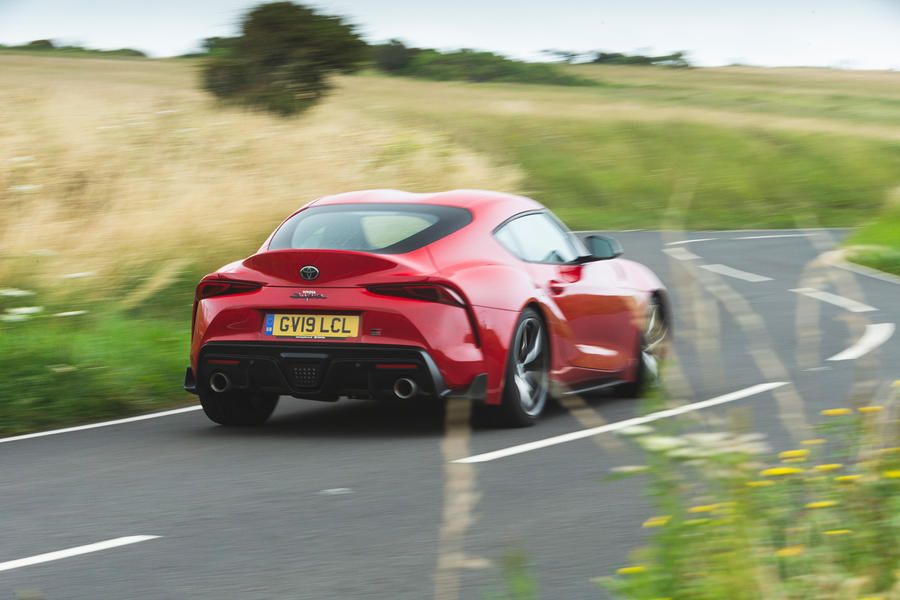
Every car received an eight-speed ZF automatic gearbox, also taken from the BMW parts bin, offering Normal or Sport driving modes.
In 2021, the GR Supra gained the 2.0-litre four-cylinder engine from the BMW 330i. This version delivers a more conservative 254bhp and 295lb ft but is 100kg lighter so gives a still-quick 0-62mph time of 5.2sec. The 3.0-litre engine is brilliantly engineered, with excellent throttle response and virtually no turbo lag. Meanwhile, the 2.0-litre engine improves the prospect of daily driving by offering up to 38.7mpg while being bubbly in character and allowing the chassis to be slightly more dynamic in corners.
That’s not to say the 3.0-litre is in any way boring, mind you. How could it be with a rear that’s happy to indulge silliness? It’s just that it’s set up to be more a GT than a feisty sports car.
While some drivers will miss the involvement of a manual gearbox, the GR Supra’s automatic is supremely smooth – something that can also be said about the overall ride comfort.
The GR Supra was launched with two specification levels. The entry-level trim, simply named GR Supra 3.0, was equipped with 19in wheels, adaptive suspension, Brembo brakes and an active differential.
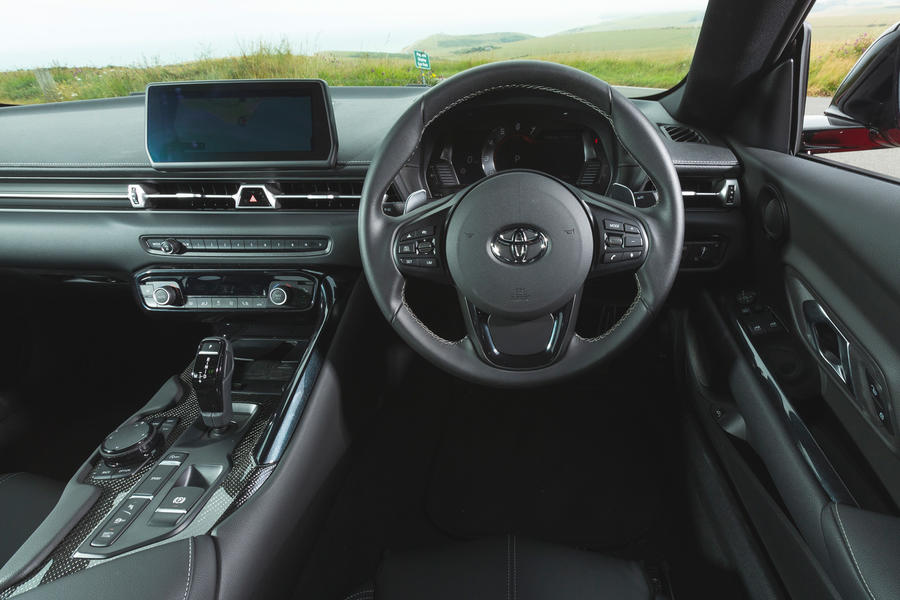
Inside, you get heated Alcantara sports seats, an 8.8in touchscreen, sat-nav, dual-zone climate control, adaptive cruise control, keyless ignition and a rear-view camera.
The 3.0 Pro accounts for most UK sales. It adds black leather upholstery, a head-up display, wireless smartphone charging and a 12-speaker sound system from JBL.
The 2.0-litre car gained its own Pro specification, with 18in wheels, a 100W stereo, cruise control, automatic headlights and wipers, keyless entry and heated Alcantara sports seats.
In addition, all cars are equipped with Toyota’s Safety Pack, which includes pre-collision assistance, pedestrian and cyclist detection, lane-departure warning and traffic-sign recognition.
The first GR Supra was sold at auction for $2.1 million (£1.57m), with all the proceeds given to charity. Fortunately, you won’t have to shell anywhere near to that for a used one today, even if values are holding up.
Prices start from around £38,000 for a 2.0-litre car. That represents a decent saving from the basic launch price of £45,995 (it was £52,695 for the original 3.0-litre car).
Need to know

Both the 3.0-litre and 2.0-litre cars were launched with a special limited-edition model, both inspired by Gazoo Racing.
The 3.0’s was the A90 Edition, with matt grey paint, black alloy wheels and red leather upholstery. Just 24 of them came to the UK.
The 2.0’s was the Fuji Speedway Edition. It was based on Pro trim but featured unique white paint, 19in black alloys and red door-mirror housings. Inside, there was carbonfibre trim and red leather seats with black Alcantara upholstery.
The Jarama Racetrack Edition was introduced last year, weirdly celebrating the car’s press launch event. Thirty of the 90 examples made came to the UK, featuring Horizon Blue paint, matt black 19in alloys and red brake calipers.
Buyer beware
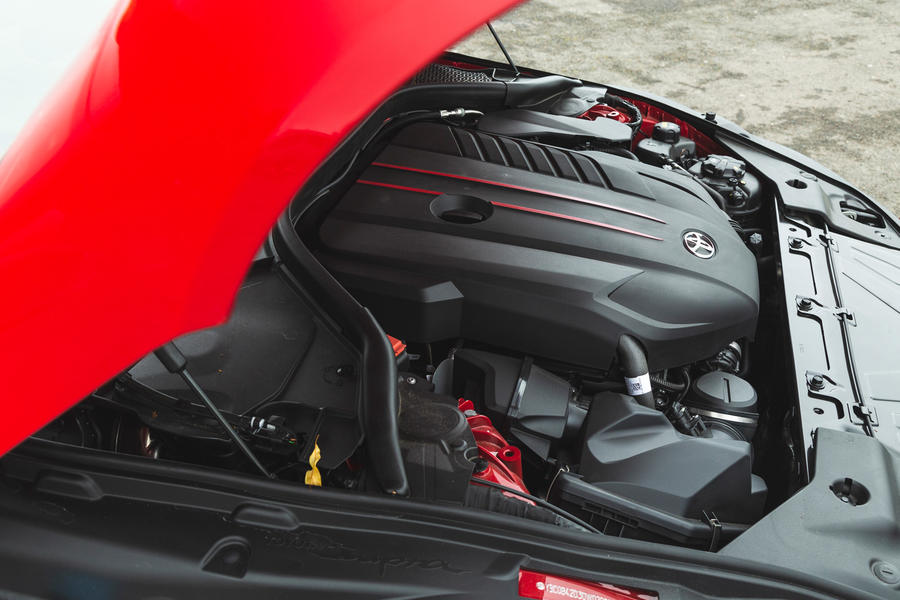
Remedial work: Toyota issued a recall for cars built from April 2019 to June 2021 for an engine management software issue that could cause damage to the oil pump or vacuum pump. Cars produced from June 2019 to October 2019 were subject to a recall for a fuel tank that wasn’t welded properly. Helpfully, Toyota has an online tool for checking whether all the necessary recall work has been done on a car. You simply need to enter its registration.
Vibrating rods: The steering tie rods on cars built from 13 March and 5 April 2019 can be damaged by vibration if they’ve been incorrectly configured. A recall was issued in late 2020 to fix the issue.
Try to relax: Reliability is good, but once the original three-year warranty is over, you can get Toyota’s 12-month Relax warranty each year until the car is 10 years/100,000 miles old by having it serviced at a Toyota dealer.
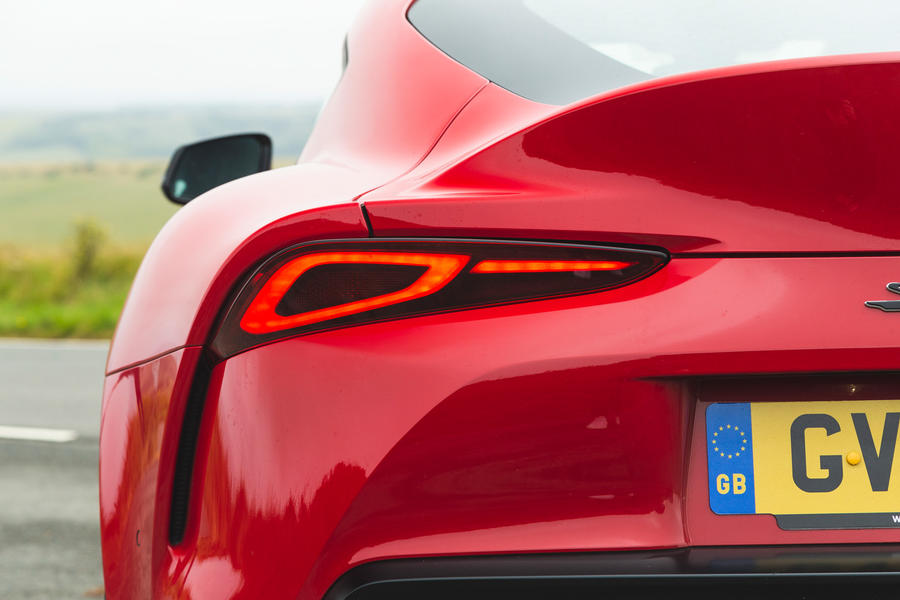
Our pick
2.0: The four-cylinder car is more involving, as the reduced weight of the smaller engine makes it livelier through corners.
Wild card
3.0: The six-cylinder car offers rapid straight-line speed and a more characterful noise, which makes it a bit more memorable than its cheaper sibling.
Our top spec
Pro: Stepping up from the base trim brings additional equipment to liven up the interior on both the 2.0 and the 3.0, including plusher seats and an excellent sound system from JBL.
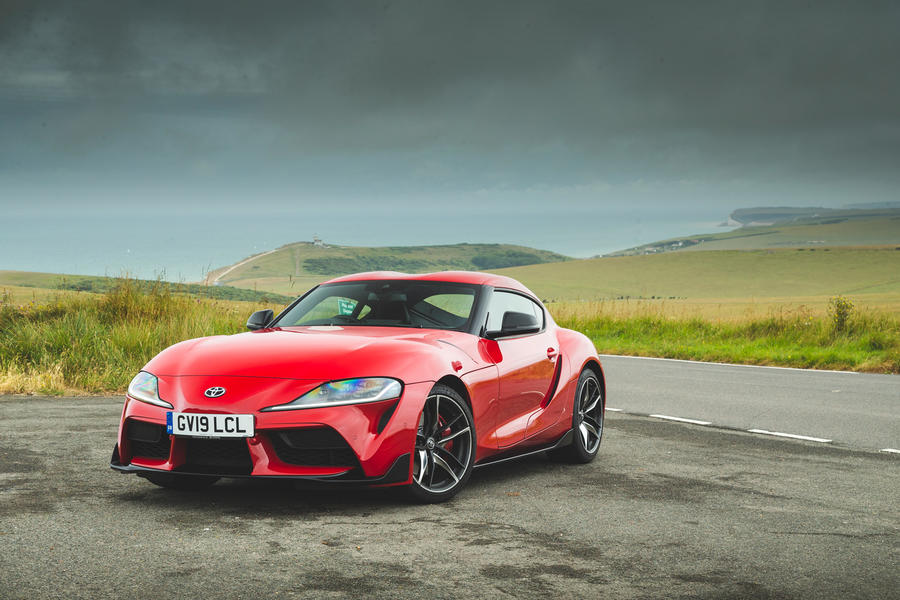
Ones we found
2019 Toyota GR Supra 3.0, 15,700 miles, £41,912
2021 Toyota GR Supra 2.0, 6600 miles, £39,999
2021 Toyota GR Supra 2.0 Fuji Speedway Edition, 1496 miles, £39,990
Source: Autocar
